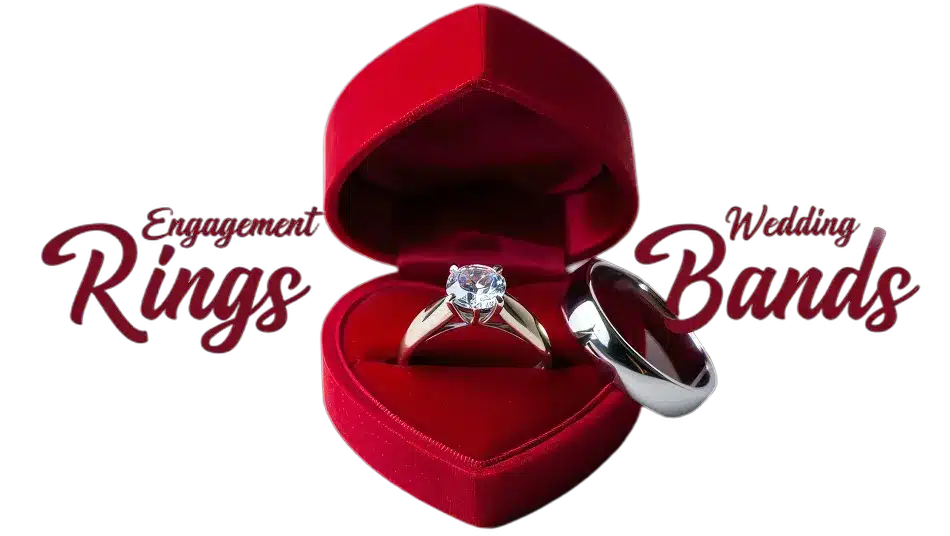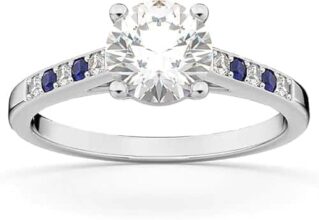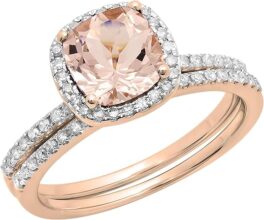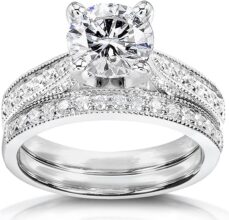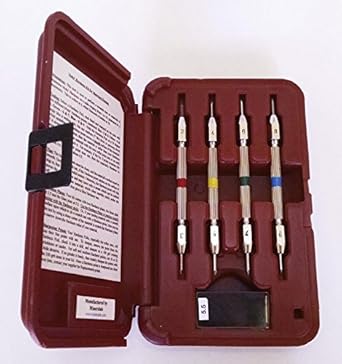
Welcome to the World of Gemstone Hardness
Have you ever wondered why some gemstones sparkle brilliantly while others seem to fade away? Understanding the Mohs Hardness Scale can be the key to making informed choices about your jewelry, particularly when it comes to rings that you wear every day.
Knowing a gemstone’s hardness can help you select the perfect stone that fits your lifestyle. Whether you’re active, or prefer to keep your jewelry for special occasions, this guide will illuminate the importance of durability in your selections.
With an array of beautiful stones available, learning how their hardness affects longevity can transform your experience. You’ll discover that a well-chosen gemstone not only enhances your style but also stands the test of time. So, let’s dive in and master the basics of gemstone hardness together!

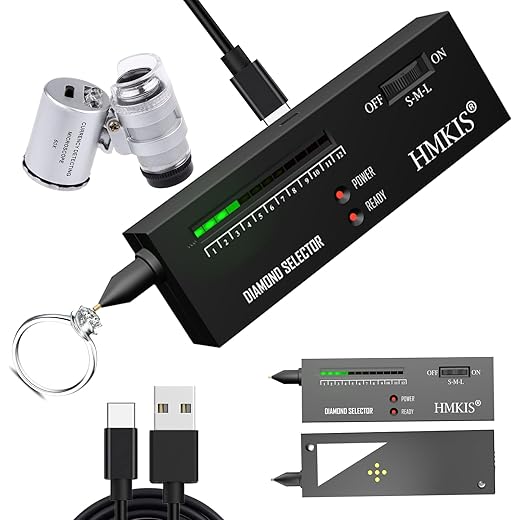


What is the Mohs Hardness Scale?
If you’ve ever scratched a surface with a fingernail or wondered how tough your favorite gemstone really is, you’re touching on the concept behind the Mohs Hardness Scale. Developed in 1812 by the German mineralogist Friedrich Mohs, this scale serves as a straightforward way to compare the hardness of various minerals, including gemstones.
The Basics of Mohs
The Mohs Hardness Scale ranks minerals based on their ability to scratch one another. It starts from softest (talc, rated at 1) to hardest (diamond, rated at 10). Here’s how it works:
The Importance of Mohs
Why is this scale crucial for you? Understanding the Mohs Hardness Scale helps you make better choices when selecting gemstones for your collection. Whether you need a durable stone for an engagement ring or a softer one for occasional wear, knowing the hardness gives you valuable insight into durability and maintenance needs.
Real-World Application
Here’s a fun fact: if you’re active with sports or manual work, opt for gemstones rated 7 or higher on the scale. These stones, like sapphires and rubies, can endure daily wear and tear. On the flip side, softer gemstones like opal and turquoise, while beautiful, might require special handling.
You can also use the Mohs scale to educate yourself about gem treatments and care. For instance, knowing that a stone has a lower Mohs rating can prompt you to handle it with more caution, leading to better preservation of its beauty over time.
Once you’re familiar with this scale, you’ll find it surprisingly empowering as you shop for your next treasured piece. With this foundational knowledge, let’s explore what the Mohs scale looks like in detail, particularly how it differentiates between various gemstones and their unique properties.
The Scale Explained: From Talc to Diamond
Understanding the Mohs Hardness Scale can feel a bit like diving into a treasure map, plotting the durability of gemstones from one end to the other. It’s an intuitive system that assigns a hardness value from 1 (talc) to 10 (diamond), guiding you in choosing gemstones that align perfectly with your lifestyle. Let’s break down this scale in a way that makes sense for your next jewelry purchase.
Talc to Diamond: The Scale Unpacked
At the very bottom of the scale, we have talc, which has a hardness rating of 1. This soft mineral is so gentle that a fingernail can easily scratch it. Next up at 2, you find gypsum, which is still quite soft but slightly more resilient. As you inch up the scale, you encounter a variety of minerals introduced along the path:
The jump at 6 to 10 is where the magic occurs. If we look at 7, you’ll find quartz, a popular mineral in jewelry, prized for its strength and variety.
Why This Matters for You
Understanding this scale means you can choose wisely when selecting stones for rings or pendants. If you lead an adventurous lifestyle, aim for stones rated above 7. These gemstones offer greater resistance to scratching and can handle the bumps and scrapes of daily wear.
However, softer stones, rated 6 and below, should be approached with a bit more caution. For example, opal, rated at just 5.5 to 6, is stunningly beautiful but may be more prone to scratching or damage—perfect for special occasions but not ideal if you’re planning to wear your jewelry every day.
For those who want to dive deeper into exploring hardness, you might consider using a hardness tester to evaluate stones for yourself!
As you grasp these ratings, you are well on your way to making gemstone choices that not only captivate your aesthetic but also support your everyday activities. Next, let’s explore how to select the ideal gemstone based on these hardness ratings, ensuring your ring complements your lifestyle perfectly.
Choosing the Right Gemstone for Your Lifestyle
When it comes to choosing the right gemstone, understanding your lifestyle and daily activities is just as important as appreciating its beauty. The hardness of a gemstone affects not only its durability but also how much maintenance it will require. Let’s explore how you can select a gemstone that fits seamlessly into your life.
Lifestyle Considerations
Take a moment to think about your daily routine. Are you often engaging in activities that could expose your jewelry to scratches or impacts? If you’re the active type—perhaps you’re a fitness enthusiast, a busy parent, or someone who just can’t sit still—it’s wise to choose a more durable gemstone.
Here’s a quick breakdown to help you decide:
Practical Advice for Selection
- Assess Your Environment: Where do you spend most of your time? If you work with your hands or in environments where your jewelry can get knocked about, choose something robust.
- Consider Care Requirements: Softer stones, like turquoise (5-6), might need more frequent visits to the jeweler for polishing or repair, should you choose to wear them daily.
- Balance Aesthetics with Durability: While hardness is key, don’t overlook your personal style. Many durable stones come in stunning designs that reflect your personality.
Remember that the balance between beauty and practicality is crucial. Choosing a gemstone that aligns with your lifestyle will ensure that you can wear it confidently every day without fear of damage.
As you weigh your options, let’s delve into some of the most popular gemstones for rings, discussing their unique characteristics and hardness ratings so you can make your ideal selection with ease.
Common Gemstones for Rings and Their Hardness Ratings
When it comes to choosing a beautiful and durable gemstone for your ring, the options can feel endless. However, understanding the hardness ratings of popular gemstones will help you navigate your choices confidently and wisely. Here, we’ll explore the hardness ratings of some favorite gemstones, including sapphires, emeralds, and rubies, while also discussing how their durability impacts their suitability for everyday wear.
The Gems You Love and Their Hardness Ratings
- Sapphire (9)
Renowned for their striking colors, sapphires are a go-to choice for rings. With a hardness rating of 9 on the Mohs scale, sapphires are nearly as hard as diamonds, making them perfect for daily wear. They’re resistant to scratches, yet stunning enough to be the centerpiece of any jewelry collection. Imagine a vibrant blue sapphire flashing under the sunlight—what a statement! - Ruby (9)
Like sapphires, rubies also boast a hardness of 9. Their rich, red hues symbolize passion and love, making rubies a classic choice for engagement rings. Durable and resilient, rubies can withstand the rigors of everyday life while maintaining their radiance. If you’re considering a unique option that shines with sentiment, you can’t go wrong with a ruby. - Emerald (7.5-8)
With their lush green color, emeralds bring a touch of elegance to any piece. However, they carry a lower hardness rating than sapphires and rubies, falling between 7.5 and 8. Emeralds often have natural inclusions, making them more susceptible to scratches or chips than other stones. It’s like the gem boasts its own character, but if you’re active, consider reserving emeralds for special occasions to keep them looking pristine. - Aquamarine (7.5-8)
This serene blue stone is not only beautiful but also fairly durable. With a Mohs rating of 7.5 to 8, aquamarine is a delightful choice for those wanting a hint of color in their rings without sacrificing toughness. These gems evoke feelings of tranquility, making them perfect for everyday wear as well. - Topaz (8)
Topaz shines brightly with its range of colors and a hardness rating of 8. This mineral is not only versatile but also strong enough to handle day-to-day activities. Its beauty lies in its ability to complement various styles, be it modern or vintage. - Diamond (10)
Although diamonds are often seen as the ultimate engagement ring choice, it’s important to note their hardness of 10 makes them scratch-resistant, a choice that stands the test of time. If you want a piece that will endure life’s adventures, diamonds are an excellent investment.
Making Your Ideal Choice
Understanding these gemstones’ hardness ratings allows you to tailor your selections to fit your lifestyle perfectly. Should you lead a dynamic life filled with activities that may put your rings at risk of scratches or damage, opting for those rated 7 or above is ideal. If your pieces are for special occasions, feel free to explore softer options like emeralds or opals, while remembering they require more gentle handling.
With this knowledge under your belt, let’s turn our attention to caring for your beloved gemstones. Up next, you’ll learn tips and tricks to maintain their beauty for years to come—ensuring your treasures are as enduring as your memories.
Caring for Your Gemstones: Tips for Longevity
Now that you’re equipped with knowledge about gemstone hardness and how to select them based on your lifestyle, it’s essential to think about how to care for these beautiful treasures. Each gemstone has its unique needs based on its hardness, so understanding how to maintain them will help ensure they keep shining for years to come.
Cleaning Your Gemstones
Regular cleaning is key to preserving the brilliance of your gemstones. Here are some general tips, depending on hardness:
Storage Solutions
The way you store your gemstones greatly impacts their durability:
Be Mindful of Activities
Your daily activities can also influence how you should protect your gemstones:
Professional Check-Ups
Just like we visit the dentist for check-ups, your gemstones can benefit from professional care too:
With these easy-to-follow tips, you’ll be well-equipped to keep your gemstones looking as vivid as the day you got them. Your harmonious relationship with your gems will flourish as they remain in pristine condition, ready to accompany you on countless adventures.
Now that you’ve mastered gemstone care, let’s wrap up our journey through the vibrant realm of gemstone hardness and its implications for your cherished pieces.
Final Thoughts on Gemstone Hardness
In conclusion, understanding the Mohs Hardness Scale is essential for making informed decisions when selecting gemstones for your jewelry. Whether you’re choosing an engagement ring or a statement piece, knowing each stone’s hardness can help you select a gem that aligns with your lifestyle and its durability. Remember, a beautiful gemstone is not only about aesthetics but also about how well it holds up to everyday wear.
So the next time you’re in the market for a new piece, take a moment to consider the hardness ratings of your options. Doing so will ensure your precious jewelry stays stunning for years to come. Embrace your newfound knowledge, and make choices that reflect both your style and the longevity of your cherished gemstones!
